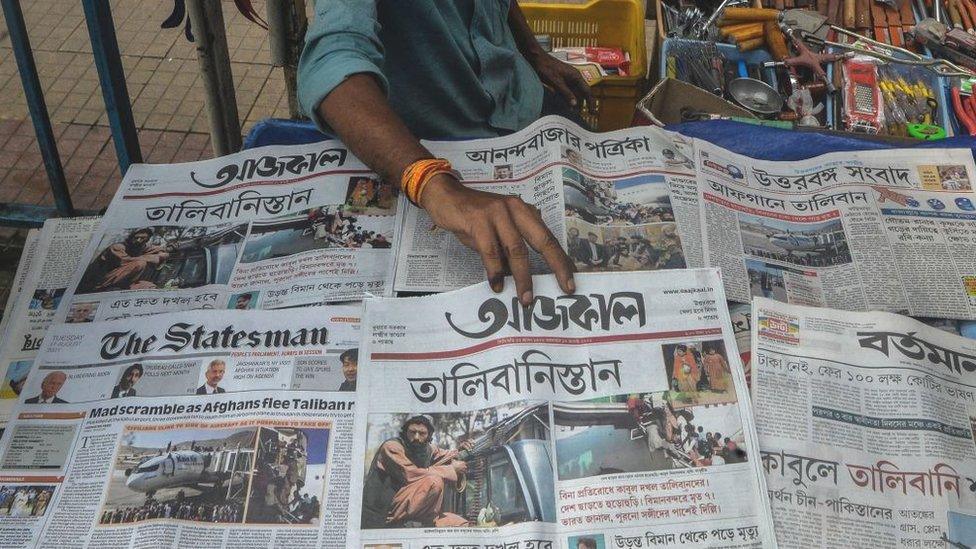India media guide
- Published
This page is no longer being updated. It was last updated on 21 March 2023

India has a flourishing media scene, with thousands of outlets operating in multiple languages.
There are around 197 million TV homes, many of them using direct-to-home satellite and cable services.
Nearly 900 private satellite TV stations are on the air, around half of them devoted to news coverage.
Doordarshan, the public TV, operates multiple services, including flagship DD1, which reaches hundreds of millions of viewers.
Multichannel satellite TV is a huge hit. Leading platforms have millions of subscribers. State-owned Doordarshan runs a free-to-air platform, DD Free Dish. Over The Top (OTT) streaming platforms have a large following.
Music-based FM radio stations abound. But only public All India Radio can produce news programming. AIR stations reach more than 99% of the population.
India's press is lively and there are around 17,000 newspaper titles. Driven by a growing middle class, the cumulative newspaper circulation figure is more than 400 million.
International organisations give a mixed assessment of media freedom.
Privately-owned media are "vigorous and diverse" says US-based Freedom House. But it says that the authorities use security, defamation and hate speech legislation to curb critical voices.
Reporters Without Borders (RSF) highlights the problem of violence against journalists, especially those working for non-English-language-media in rural areas.
It says that reporting in regions that the authorities deem to be sensitive, such as Indian-administered Kashmir, is difficult.
India online
There were 833 million internet users by July 2022, comprising 59% of the population (Internetworldstats.com). This is the second largest number of internet users in the world after China.
Internet use has been slower to take hold in rural India.
Facebook is the leading social network, with around 515 million users by 2022. Twitter is used by celebrities, journalists and politicians, some of whom have a mass following.
There is no systematic filtering of the web. But the authorities have clashed with leading social networks over censorship of content deemed to be offensive.
The authorities routinely suspend internet services in Indian-administered Kashmir at times of tension.
Press
The Times of India, external - Mumbai-based daily
The Hindu, external - Chennai-based daily
The Hindustan Times, external - New Delhi-based daily
The Pioneer, external - New Delhi-based daily
The Indian Express, external - New Delhi-based daily
The Statesman, external - Kolkata-based daily
Deccan Herald, external - Bangalore-based daily
The Asian Age, external - New Delhi-based daily
India Today, external - New Delhi-based news magazine
Outlook, external - New Delhi-based news magazine
Television
Doordarshan, external - public; national, regional, local and satellite services
CNN News18, external - 24-hour news in English
New Delhi TV (NDTV), external - operates NDTV 24x7 and NDTV-India news channels in English and Hindi
Star TV, external - satellite, cable
Zee TV, external - satellite, cable
Aaj Tak, external - news channel in Hindi
Radio
All India Radio, external - public, operates domestic and external networks
Radio One, external - commercial
Radio Mirchi, external - commercial
Radio City, external - commercial
Red FM, external - commercial
News agencies
Press Trust of India (PTI), external - non-profit, owned by newspaper titles
Asian News International (ANI), external - commercial, privately-owned multimedia news agency
Indo-Asian News Service (IANS), external - privately-owned newswire